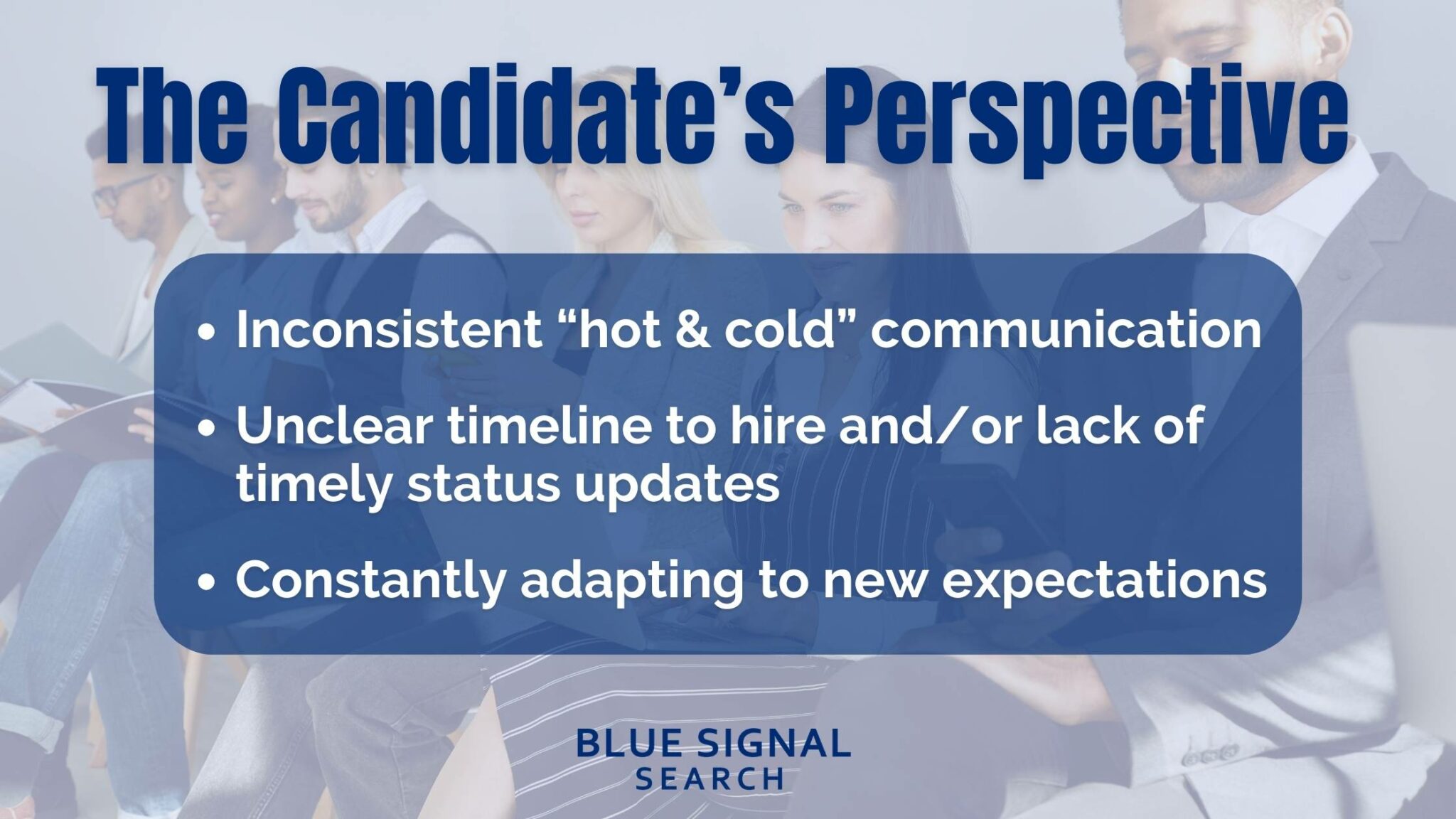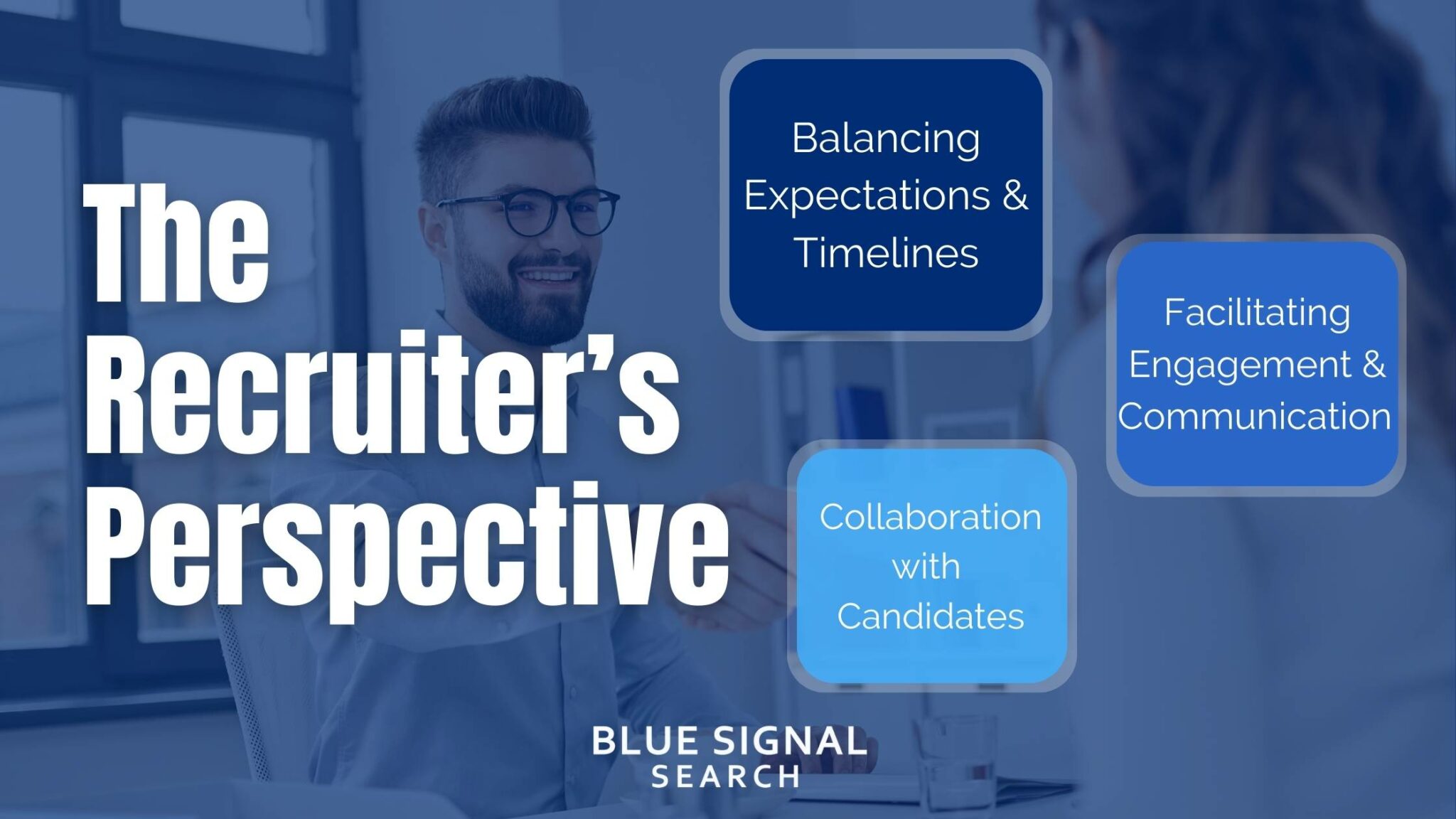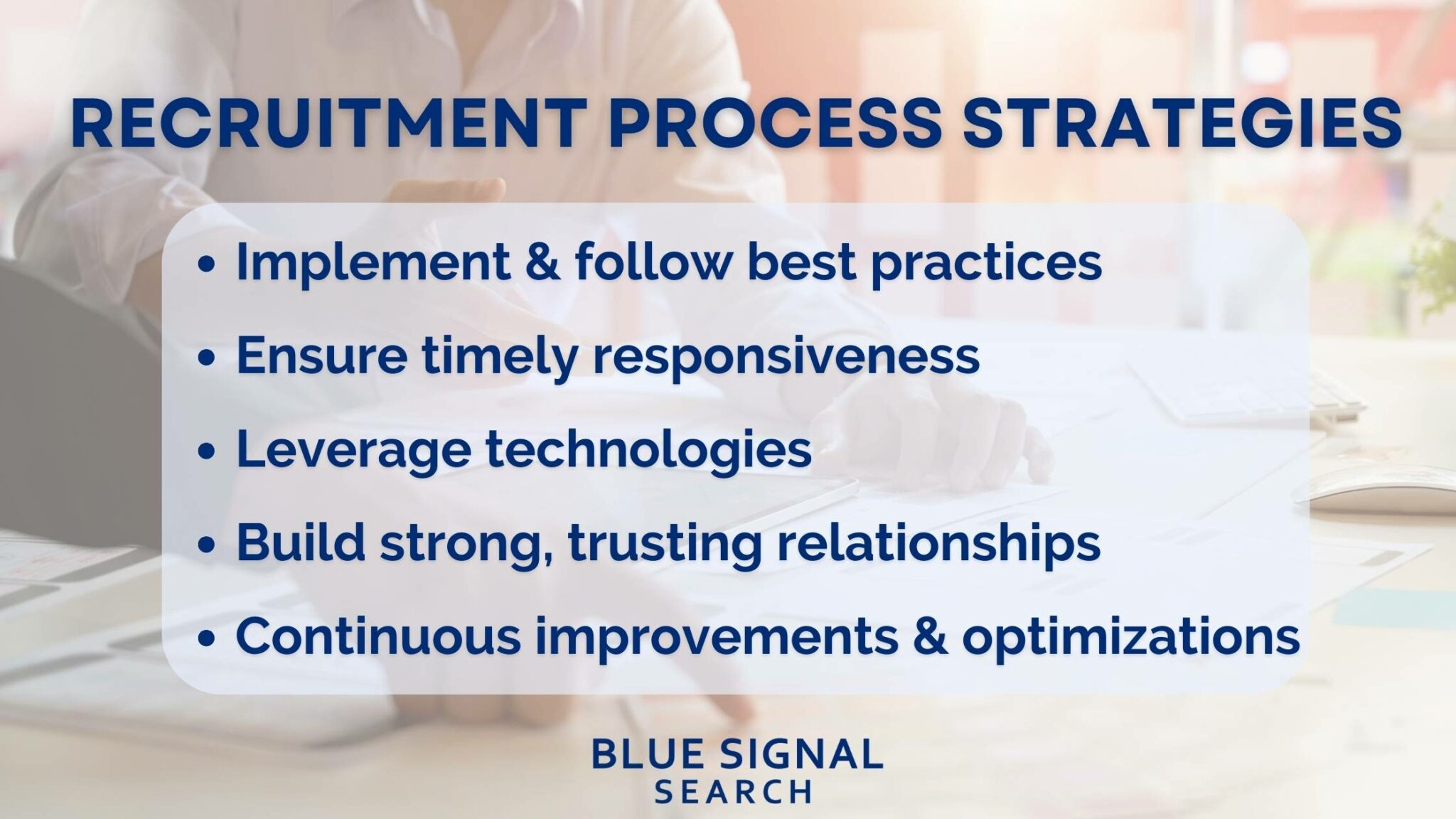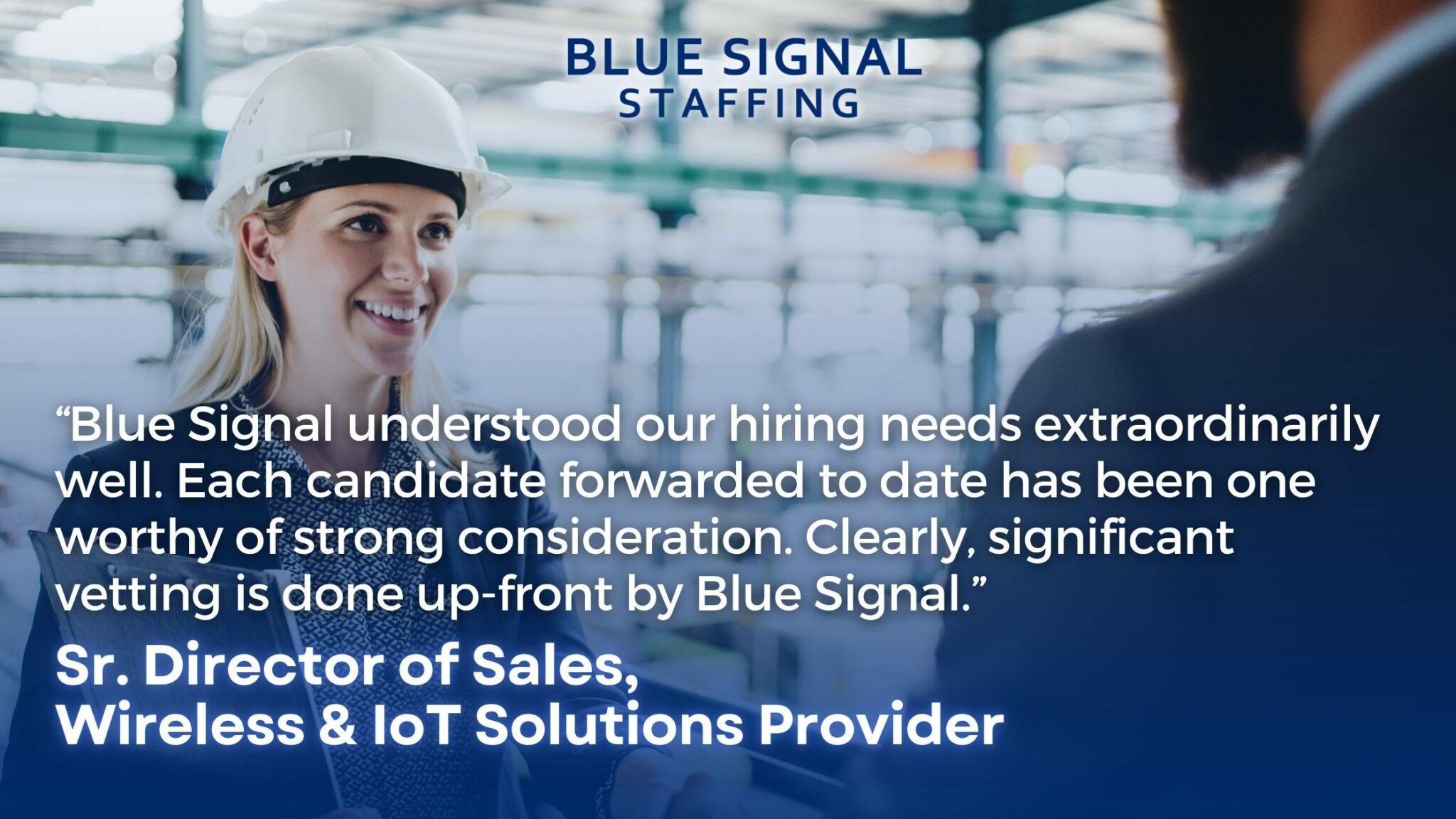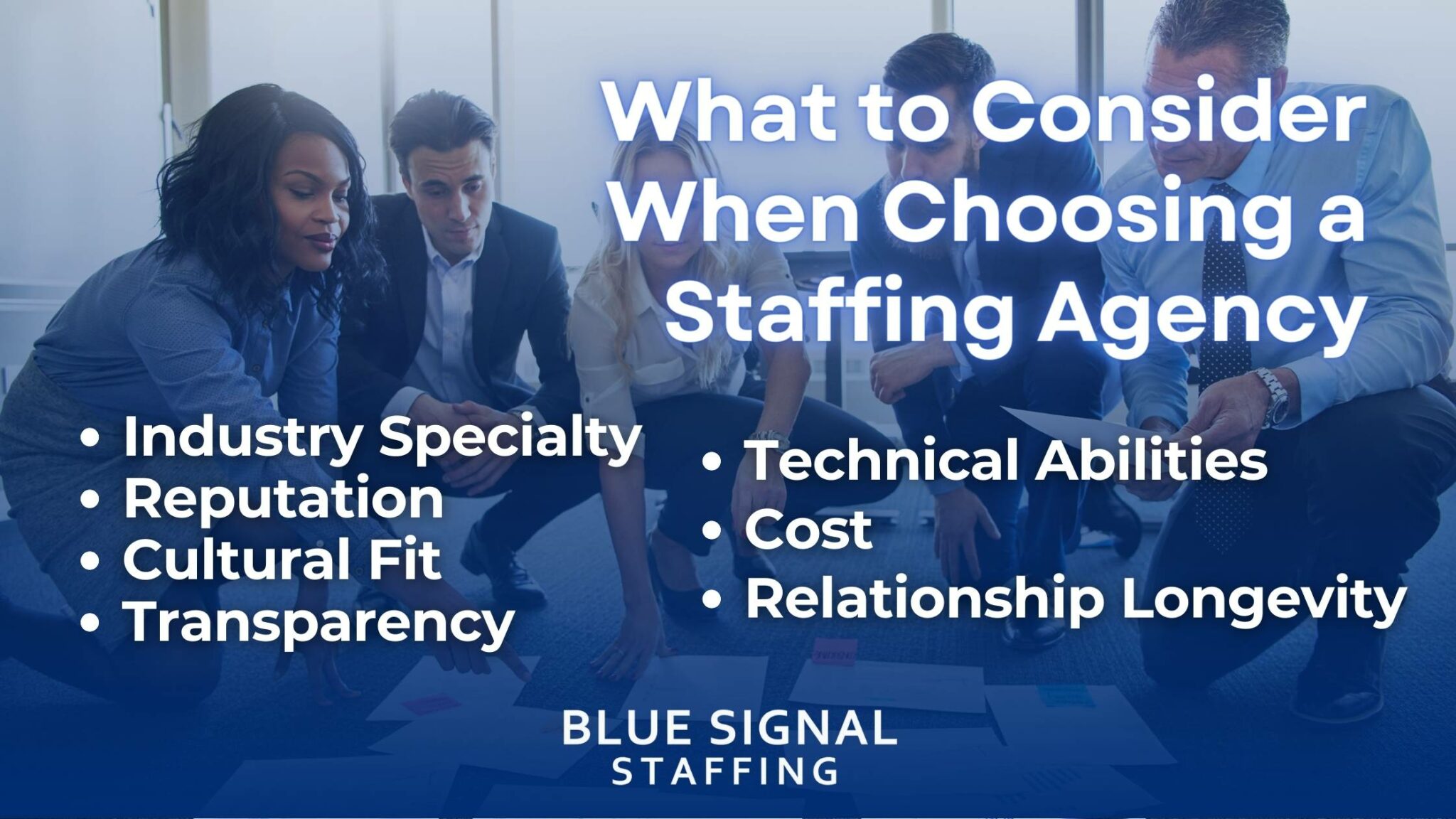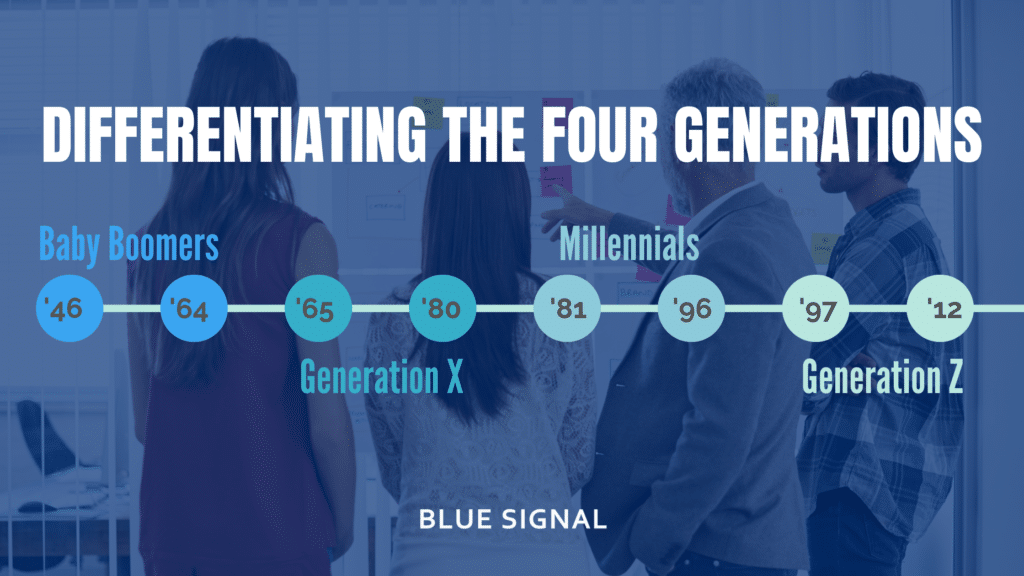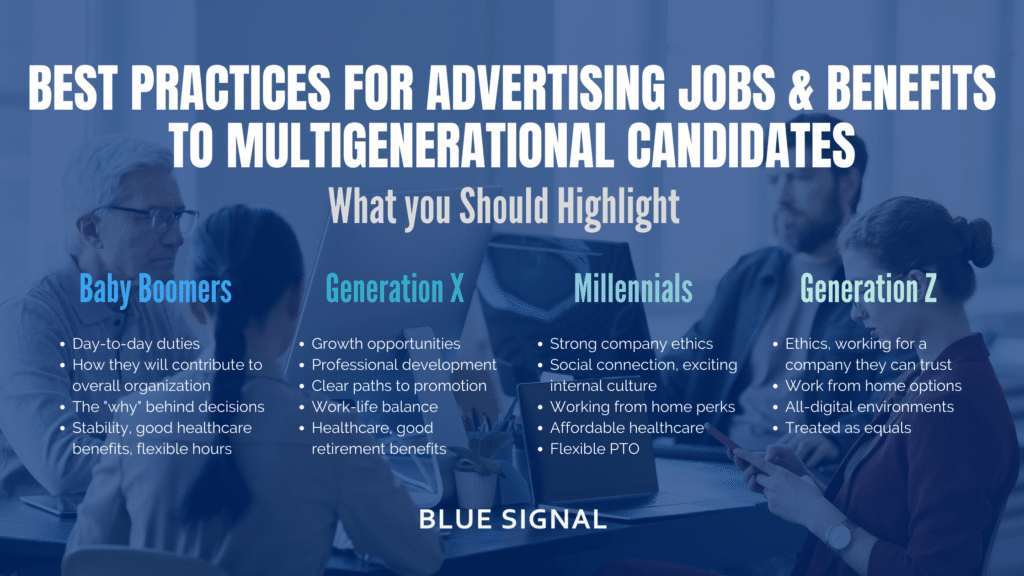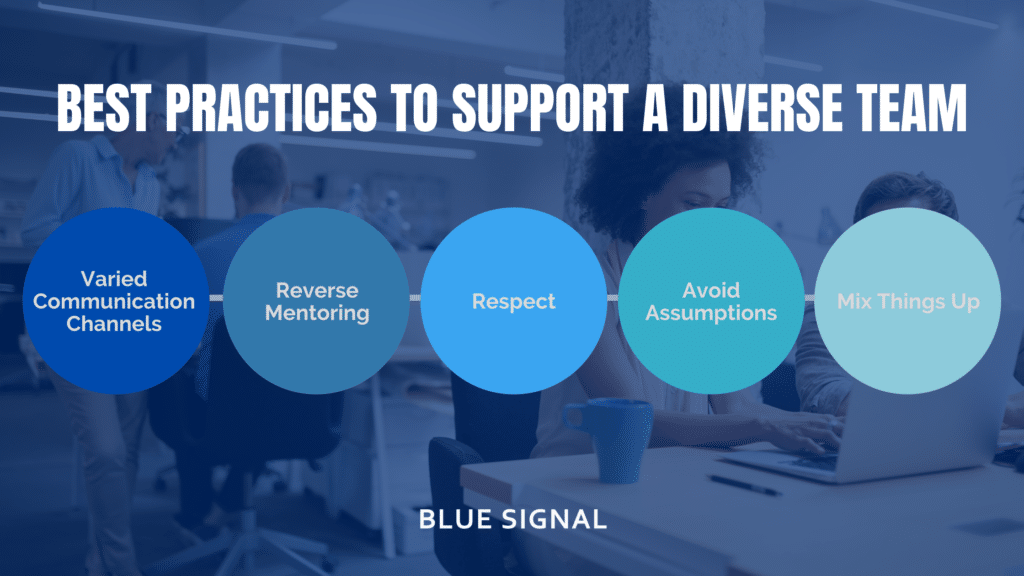How can your company excel at attracting talent in today's competitive market? The answer might surprise you: storytelling. Yes, you read that right. At Blue Signal, we've found that the most impactful connections between companies and potential talent stem from a profound, shared narrative. It's not just about the vacancies to be filled; it's about weaving your clients' unique stories into the fabric of your recruiting strategy. This is your ultimate guide to leveraging storytelling for attracting top-tier talent.
While storytelling isn't a novel concept, its application in recruitment can be transformative. By harnessing the power of narrative, you can transform abstract opportunities into tangible aspirations, thereby making the recruitment process more engaging and meaningful. Through storytelling, you can communicate not only the 'what' and the 'how' of a position but, more importantly, the 'why'. This approach can attract individuals who resonate with your company's vision, leading to the advancement of a collective mission. As we delve deeper into the significance of storytelling in recruitment, let's explore how this potent tool can not only attract talent but also foster enduring connections between your company and prospective candidates.
The Impact of Storytelling in Attracting Talent
Humans are naturally drawn to stories. They shape our perceptions, influence our decisions, and establish deeper connections. In the realm of recruitment, a well-crafted narrative does more than relay facts; it breathes life into a role, making it resonate with the ideal candidate. This isn't about fabricating stories or embellishing details. It's about authentically sharing your company's journey—the challenges, triumphs, and vision for the future. By doing so, you're not just attracting talent; you're attracting the right talent—individuals who align with your company's values and long-term goals.
The magic unfolds as candidates see their own values reflected in your company's story, fostering a deeper connection and commitment. In an era where purpose outweighs paycheck for many job seekers, a compelling narrative can differentiate between a candidate who merely fills a role and one who is genuinely passionate about it. It's about fostering a sense of belonging from the outset, integrating potential candidates into the narrative and making them feel like they're returning home rather than venturing into the unknown.
Uncovering Your Company’s Story
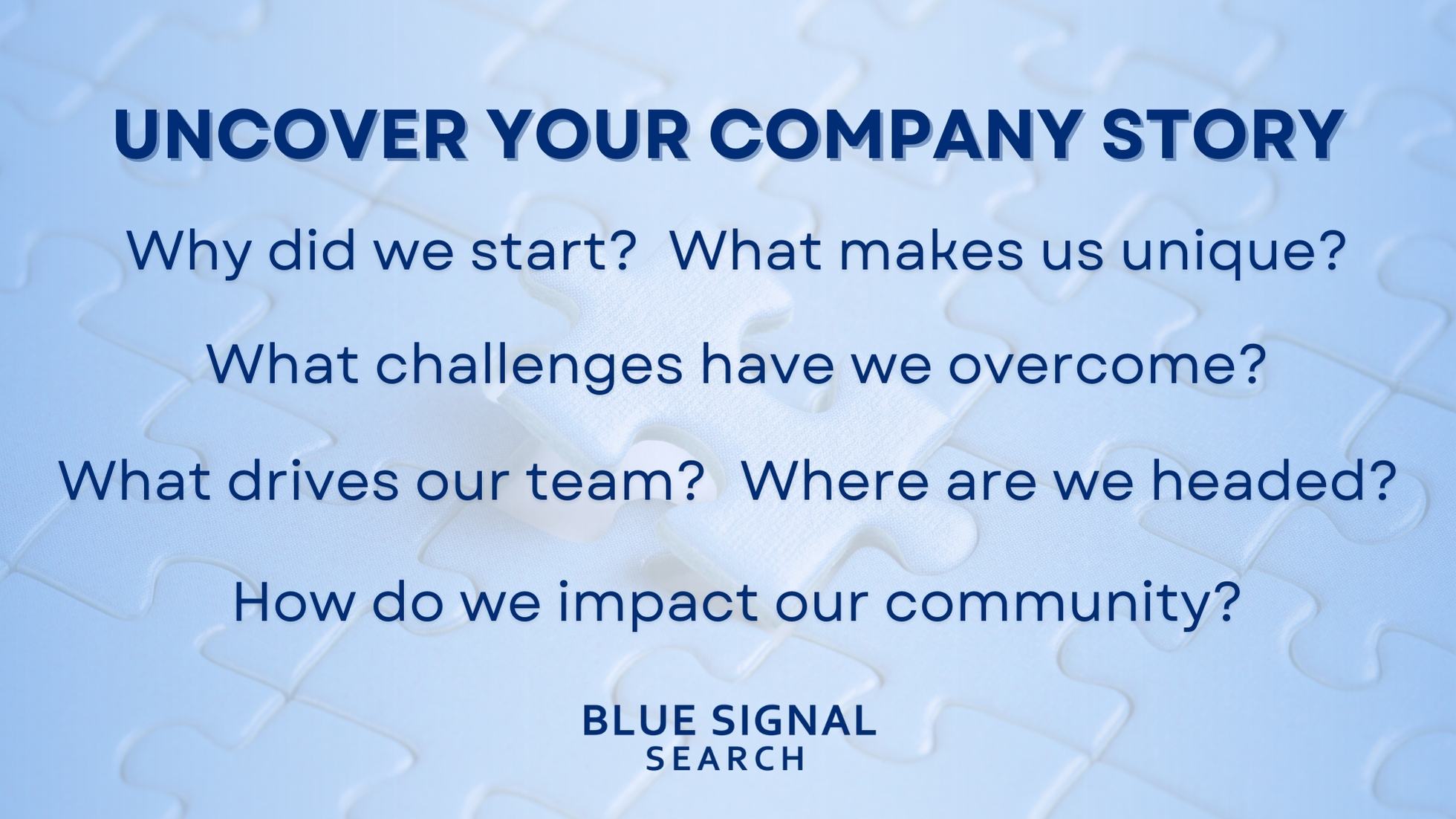
The first step in attracting talent is truly understanding your company's narrative. This goes beyond surface-level details about what the company does; it involves delving into the 'why' and the 'how'. What challenges have you overcome? What accomplishments are you most proud of? And crucially, what future are you striving to create? At Blue Signal, we recognize the importance of grasping your company's story—not just to acknowledge past achievements and obstacles but also to highlight your aspirations and the significant impact you aim to make.
An exemplary model of this storytelling approach is Patagonia, highlighted by Forbes for its success in connecting employees' work to the company's environmental and community-focused goals. Patagonia's story illustrates how creating a strong sense of purpose can lead to high employee satisfaction and a proud affiliation with the company. By showcasing how the business's efforts contribute to broader social and environmental objectives, Patagonia inspires its team and attracts individuals passionate about making a difference.
By leveraging such narratives, we strive to present your company to potential candidates not just as a workplace but as a community where they can actively contribute to meaningful projects and initiatives. This approach ensures that you attract talent that is not only skilled but also deeply aligned with your values and long-term visions. By embedding your unique story and aspirations into your hiring strategy, we create a compelling narrative that resonates with prospective candidates, motivating them to be part of a collective journey towards impactful achievements.
Crafting and Communicating the Narrative
Once you've grasped the essence of your company's story, the next challenge is articulating it effectively. This is where creativity comes into play. Job descriptions evolve into narratives of opportunity and growth. Your company culture is portrayed as a dynamic community where individuals can thrive and contribute to a greater purpose. Every interaction is an opportunity to showcase how candidates can not only fit into this story but also contribute to its ongoing development.
At this juncture, it's crucial to understand the transformative power of combining an idea with an emotion through storytelling. Robert McKee, a world-renowned screenwriting lecturer, eloquently captures this essence in a conversation with HBR senior editor Bronwyn Fryer. He asserts, "The other way to persuade people—and ultimately a much more powerful way—is by uniting an idea with an emotion. The best way to do that is by telling a compelling story." This insight, highlighted in the Harvard Business Review article "Storytelling That Moves People," underscores the profound impact storytelling can have in the realm of recruitment.
In the age of digital communication, where attention spans are short, a well-told story can cut through the noise, attracting talent. It's not just about listing benefits and requirements; it's about showcasing a journey. This journey doesn't just attract applicants; it attracts believers—people who are ready to invest their talent and time into realizing a shared vision.
The Result? Attracting Talent That Resonates
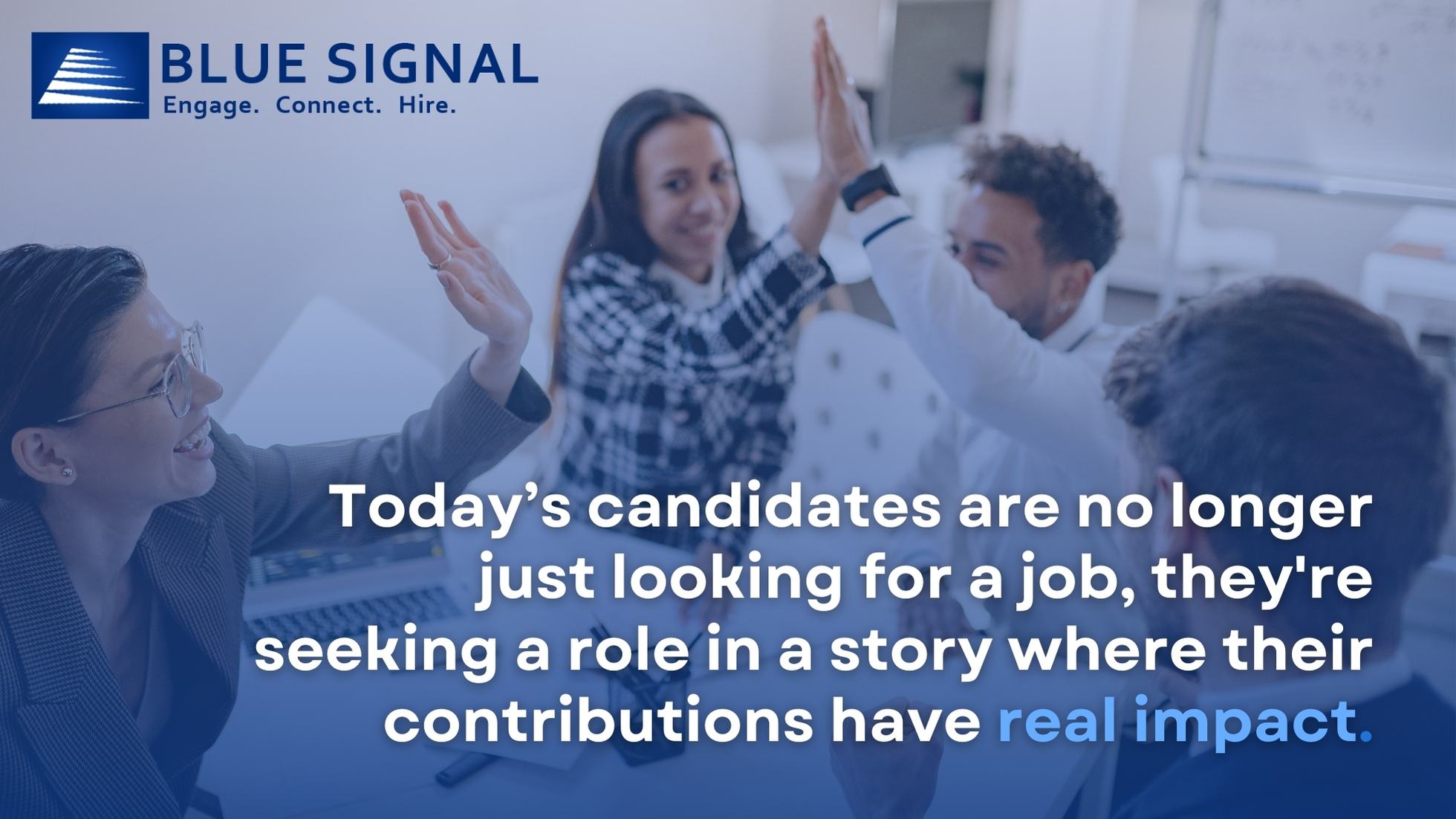
Furthermore, incorporating storytelling into your recruitment strategy achieves more than just filling vacancies — it forges meaningful connections. Today’s candidates are no longer just looking for a job, they're seeking a role in a story where their contributions have real impact. This strategic shift in approach has been pivotal for us at Blue Signal in attracting talent. By presenting candidates with a clear, compelling narrative, we enable them to see their potential place within it, leading to placements that are as fulfilling for them as they are successful for our clients.
In Conclusion
Recruiting is evolving, and at Blue Signal, we're leading the way by leveraging the power of storytelling to create deeper connections, ensure cultural alignment, and master the art of attracting talent that goes beyond filling positions to truly fulfilling the vision of our clients. As you navigate the complexities of today's job market, remember: the right story can be your most powerful tool in attracting the talent that will drive success.
Embrace the art of storytelling in your recruitment efforts and watch as the right candidates are drawn to the narratives you share. Because, in the end, it's not just about finding someone who can do the job—it's about finding someone who wants to be part of your company’s story.
Ready to Transform Your Recruiting Strategy?
If you're looking to elevate your recruitment approach with the power of storytelling, connect with us at Blue Signal. Let's craft the narratives that will attract the talent you need to succeed, whether it's in industries like technology, healthcare, finance, or engineering. Together, we can turn stories into magnets for the right candidates. Reach out today, and let's begin writing the next chapter.
Connect with Austin Younglove
Meet Austin Younglove, our Director of Sales at Blue Signal, a seasoned expert in bridging the gap between companies and top talent through powerful storytelling. Austin's strategic insight and deep industry knowledge make him an invaluable asset to any recruitment strategy focused on attracting talent that not only meets but exceeds expectations. If your goal is to elevate your hiring process and find candidates who are as passionate about your story as you are, Austin is here to guide you. Visit his recruiter bio page to learn more and connect with him for tailored recruitment solutions that resonate. Reach out to Austin Younglove today, and let's start shaping the future of your team together.

Partner with us for your next hire.
Set up a free consultation with a recruiting manager. Tell us about your hiring need.
By submitting this form, you consent to receive communications from Blue Signal, including phone calls, emails, and text messages.
